
Spicy or sweet, peppers are always a treat to grow in your garden.
Especially if you love salsa. And who doesn’t?!
We canned ten jars of spicy salsa last summer when tomatoes and peppers were in season. The last batch disappeared mysteriously on New Year’s Eve. Guess we need to up that number next year.
Another reason you might be interested in growing peppers, is that you love to eat them fresh. Do you not? Crunching with delight in every bite?
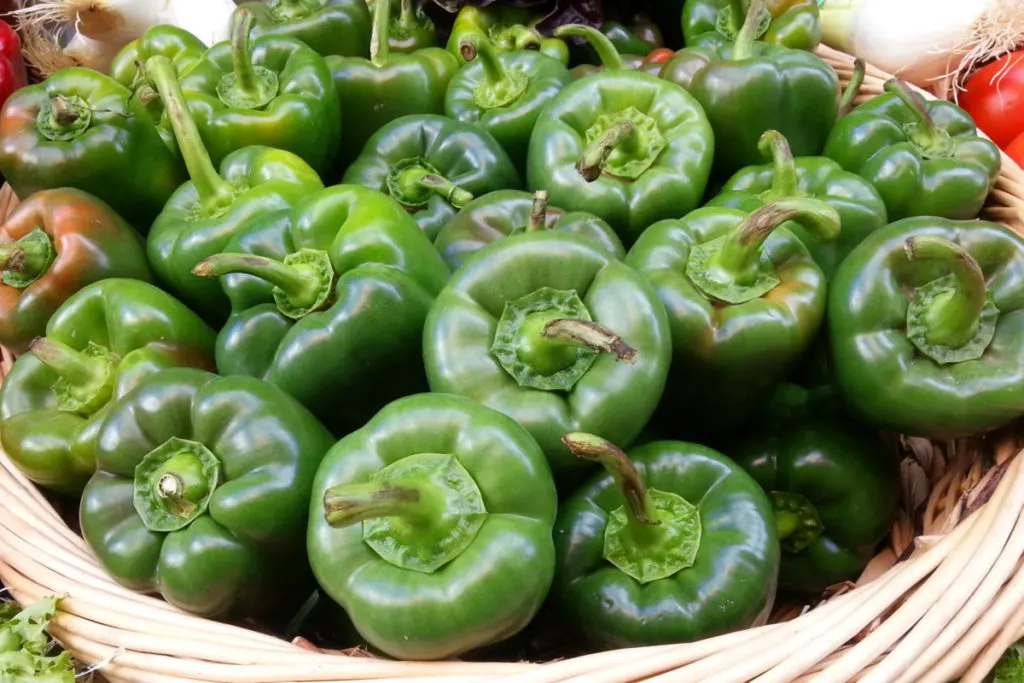
Perhaps you prefer your peppers roasted, grilled, or in salads.
Or maybe you dare to adventure on the spicy side of life. That is, when you’re growing anything from jalapeños to orange habaneros. Anything spicier than that and you must be a dedicated pepper connoisseur to truly enjoy the potentially burning experience.
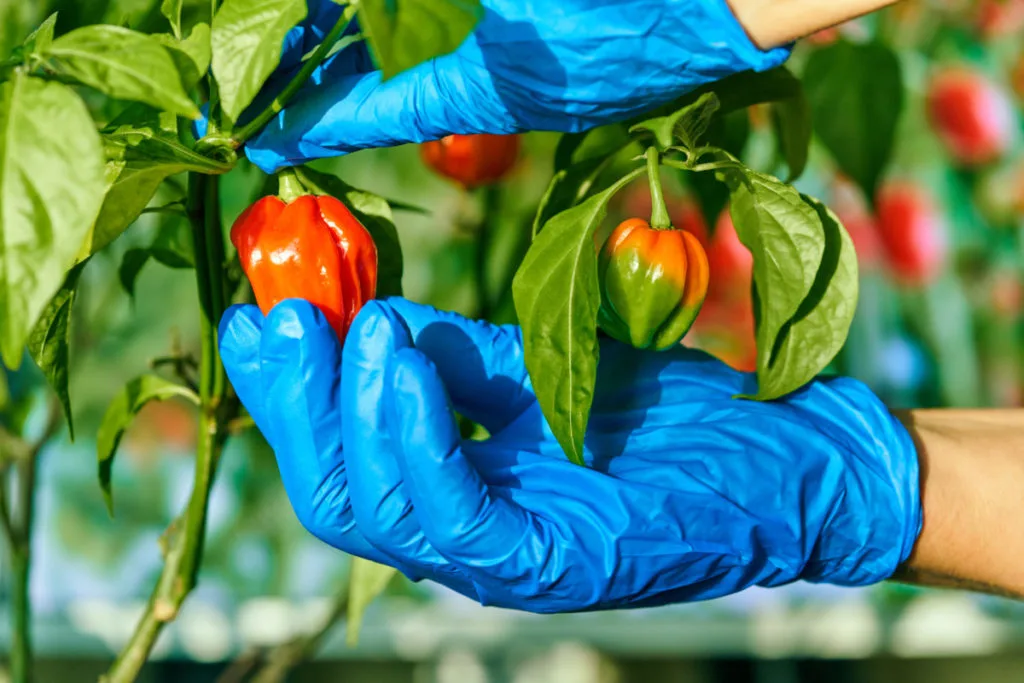
No matter where you fall on the pepper spectrum, or Scoville scale, across the board there are some basic things you need to know about growing capsicums.
Growing Conditions for Peppers
While planting, tending and harvesting your pepper crop isn’t difficult (and most articles will say that growing peppers is easy) there are some problems that can arise.
Without the proper growing environment, your pepper harvest doesn’t stand a chance. Cold nights are more detrimental than heat.
Pepper plants (Capsicum annuum) generally thrive in temperatures between 60-90 °F.
More optimally they prefer 70-80 °F. A little more, rather than a little less.
If your climate cannot provide for such a tight temperature range, it is possible to grow them in a greenhouse or polytunnel. Peppers are also one of those garden vegetables that are suitable for container gardening.
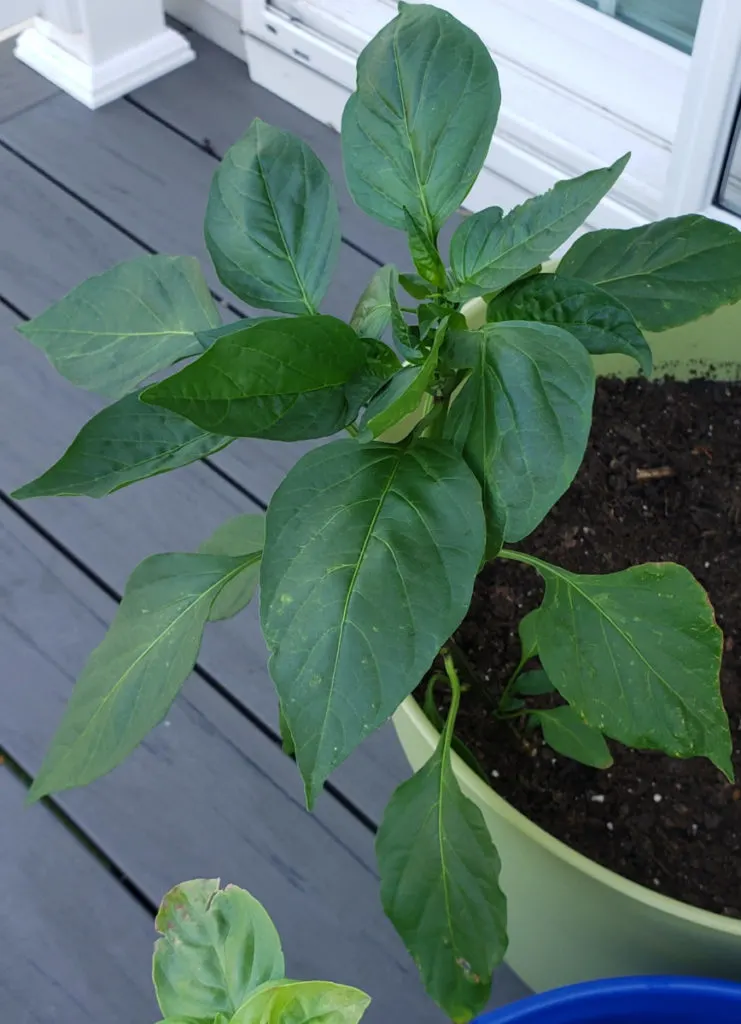
If you want to grow peppers, keep both daytime and nighttime temperatures in mind. It’s the deciding factor of your abundant or less than imagined harvest.
With the temperature under control, let’s move onto other ways to increase your chances of peppery success.
8 Easy-Growing Tips for Abundant Peppers
Again, sweet or spicy, there are rules for growing both kinds of peppers, though mostly the growing conditions overlap.
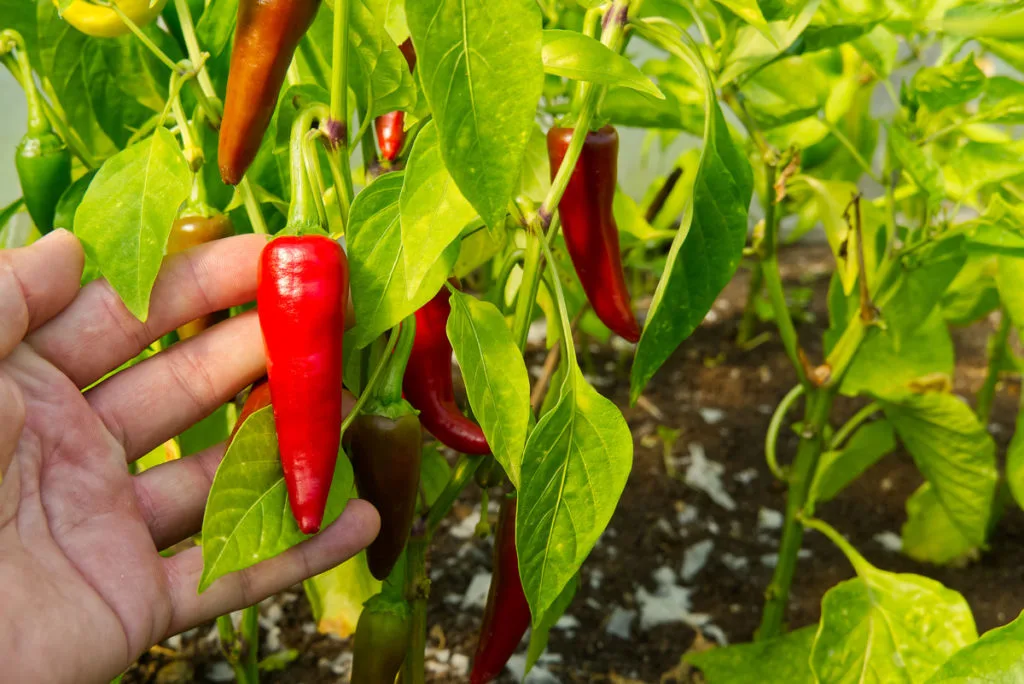
The differences will be noted where necessary.
Besides these eight pepper growing tips, it’s also important to know not only how to plant the seeds, but when to plant them.
If you’re in the far south, it may be possible to plant pepper seeds directly in the garden. However, for the most part, pepper seeds should be planted indoors, due to their long growing season (particularly hot peppers).
Pepper seeds should be started indoors about 8-10 weeks before being transplanted in the garden. As far as transplanting your peppers into the garden, this should happen 2-3 weeks after your last expected frost date when nighttime temperatures do not dip below 60 °F.
It takes a bit of calculation on your part, but the rewards will be great when you get it right.
1. The trick for getting pepper seeds to germinate
Getting pepper seeds started doesn’t always come easy. That is why many of us leave this crucial job to the more experienced staff at the nurseries and garden centers. After all, they must know what they are doing.
But do you know what? You can start your own peppers from seed too! It takes a little patience, sometimes a bit of luck, and eventually they will come around. At least some of them.
Pepper seeds can germinate in about a week when temperatures are just right: 70-80 °F.
That’s pretty hot, compared to other garden vegetables. Even with ideal germination temps, your results can vary from variety to variety, with hot peppers being the more finicky ones.
To speed up your rate and success of pepper germination, take a thick paper towel, get it wet and thoroughly squeeze it out. Now, that it’s damp, place the pepper seeds inside and place the whole thing in a plastic bag in a warm place. The top of the fridge or a kitchen countertop will work just fine.
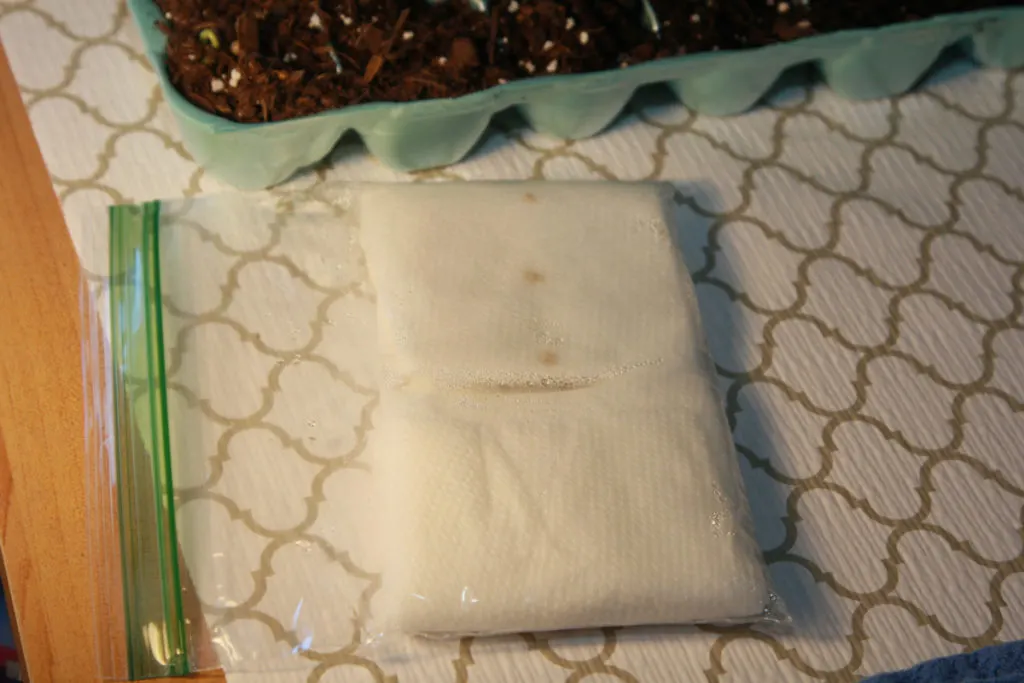
When your seeds begin to sprout, you can very carefully plant them in individual containers where they will grow for the next two months.
Yes, peppers belong to the group of 15 vegetable seeds to sow in January or February. It’s almost never too early to think about planting them.
2. Planting your peppers in the right space
Peppers are a sun-loving crop that thoroughly enjoys the heat of the sun. About 6-8 hours of full sun is sufficient for optimal growth.
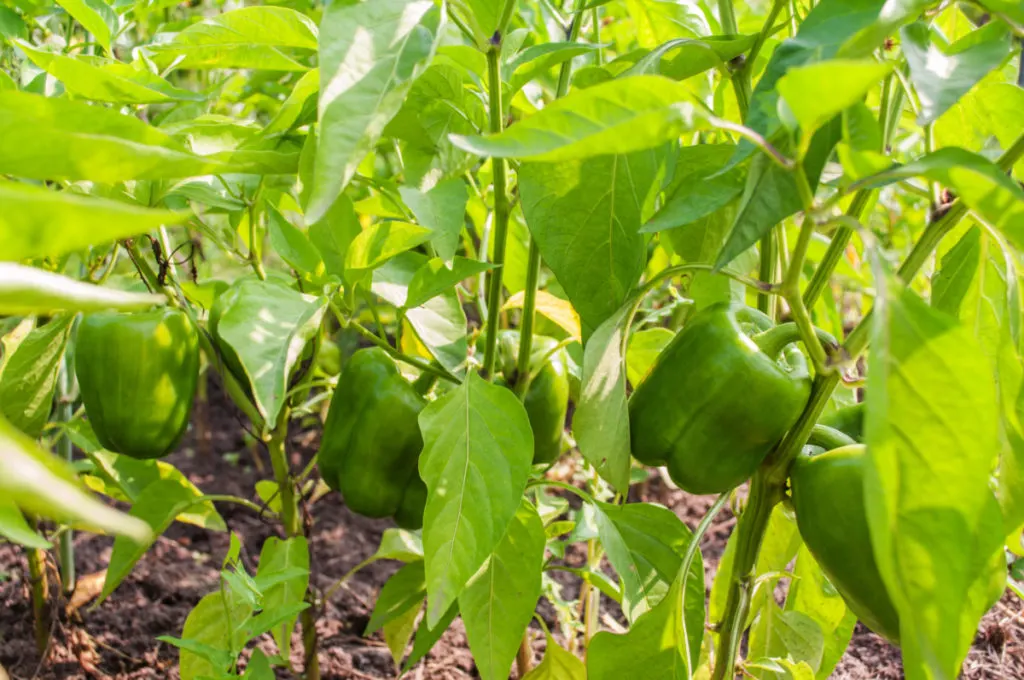
That being said, bell peppers can tolerate some partial shade, being the fleshy, juicy peppers that they are. When your peppers are less stressed, they will require fewer interventions as well.
Hot peppers, on the other hand, will appreciate all the sun they can get. Those spicy varieties will be less productive in the shade.
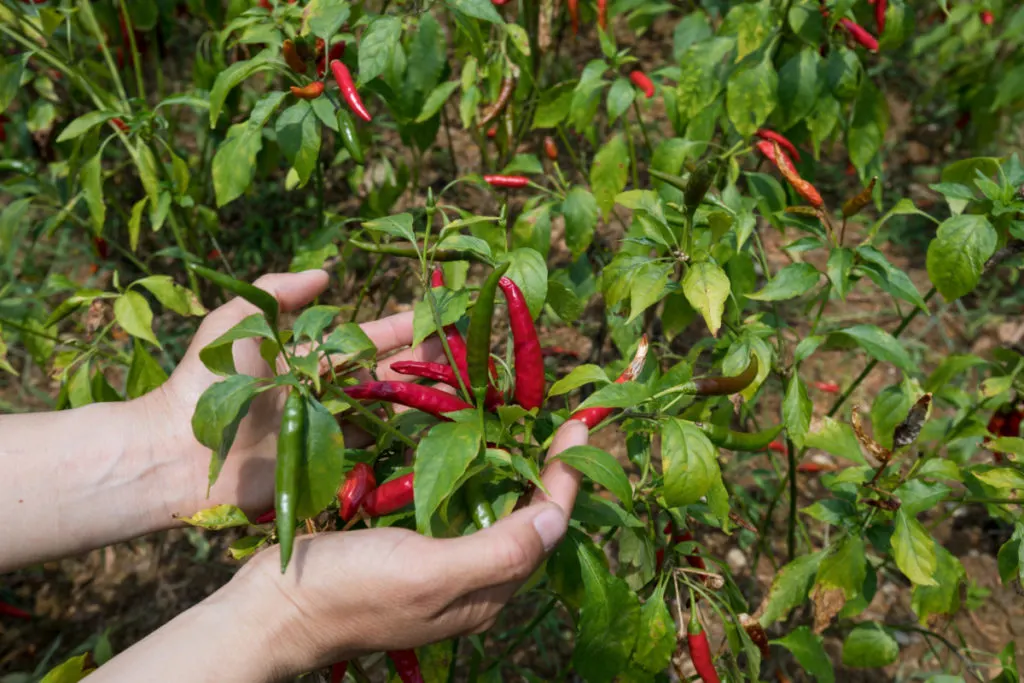
3. Plant your peppers in ideal soil
Pepper plants can be a bit picky about where they stand, preferring a well-draining sandy loam that is rich in organic material.
Give them that and all should be happy, everything else considered.
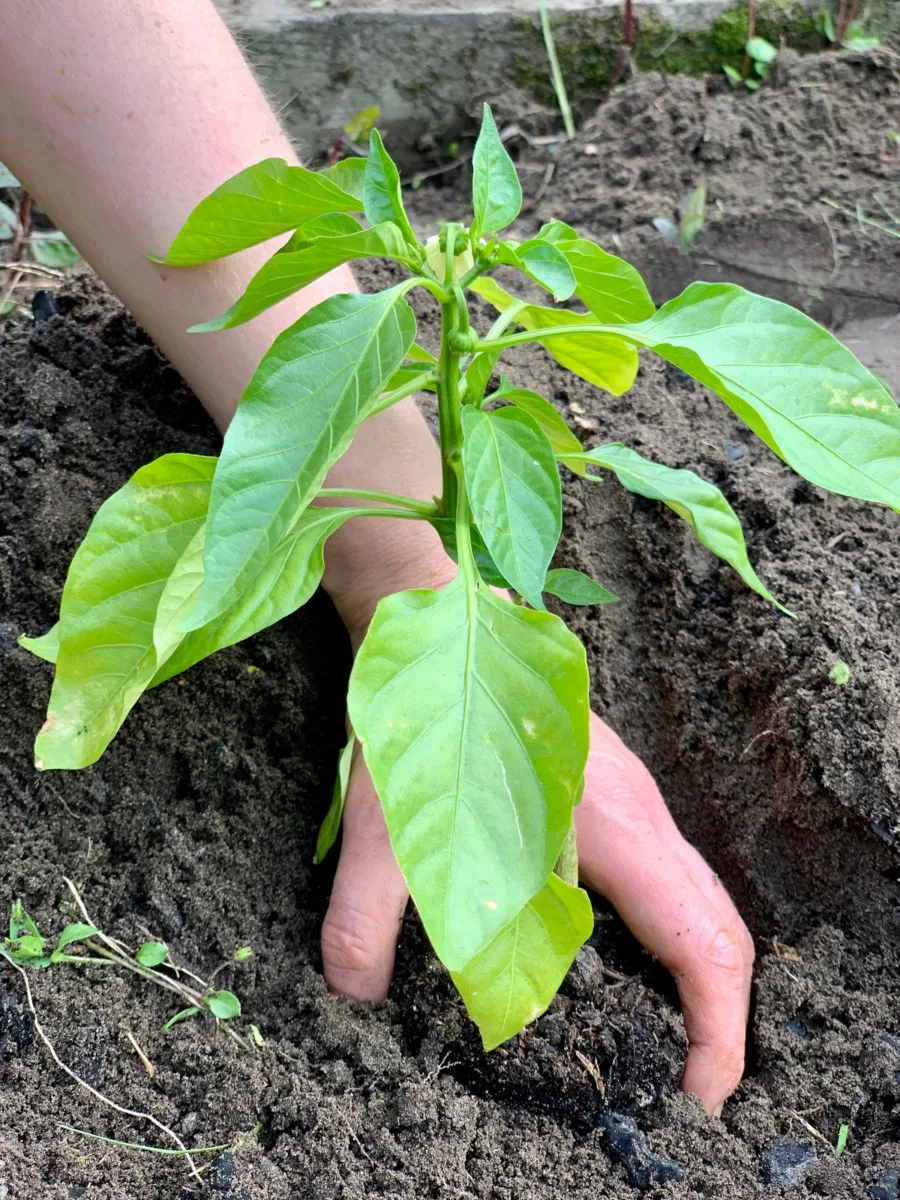
So, while you’re considering where to place them in your garden, it’s worth noting peppers should be planted where they haven’t grown recently.
This brings in a whole other area of expertise called crop rotation that is definitely worth looking into. Not only will this aspect of gardening help with growing peppers, but it can also be a boon for your potatoes and tomatoes as well.
While adding compost is most often the right thing to do to cater to your young pepper plants, you need to be aware that too much nitrogen in the soil is a bad thing. This condition makes pepper plants grow fast, at the same time they become less productive.
Sweet peppers mature in 60-90 days. Hot peppers can take up to 150 days. You need to find your own planting sweet spot in all of this.
4. Planting and hardening off pepper seedlings
Before you even begin to think about plant spacing, you’ll have to wait for the right moment to begin hardening off your pepper seedlings.
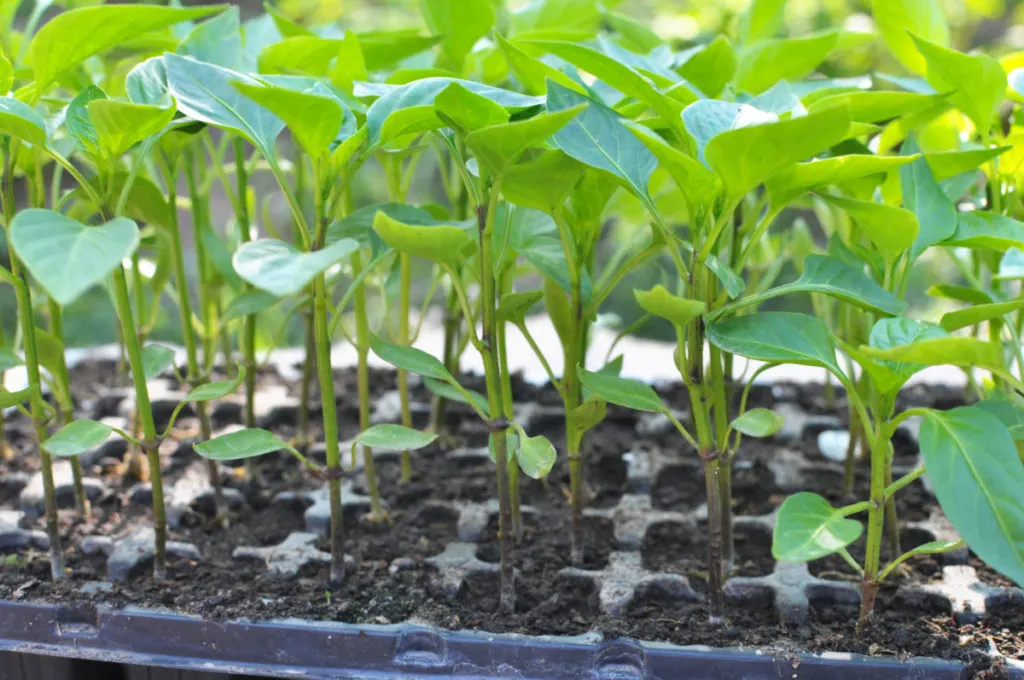
Hardening off simply means exposing your seedlings to lower temperatures, so they can gradually get exposed to outdoor conditions. You can’t just take them directly from the greenhouse and plop them in the soil. That would be too much of a shock!
Instead, take your tray(s) of seedlings outside when daytime temps hit mid-60s. Leave them by the warm edge of your house or garage for a few hours each afternoon, 3-4 days in a row.
As you take them in and out (never leave them out at night), you can increase the number of hours they stay outside.
When all danger of frost has passed, it’s finally time for planting. Plant them a little bit deeper than they were in their containers.
And leave plenty of room between your pepper plants, about 10-18″ apart, with 18″ between rows.
Related reading: Plant Spacing – 30 Vegetables & Their Spacing Requirements
5. Finding the right amount to water your peppers
Peppers don’t need a ton of water – about 1″ of water per week – so don’t get in the bad habit of soaking them every day.
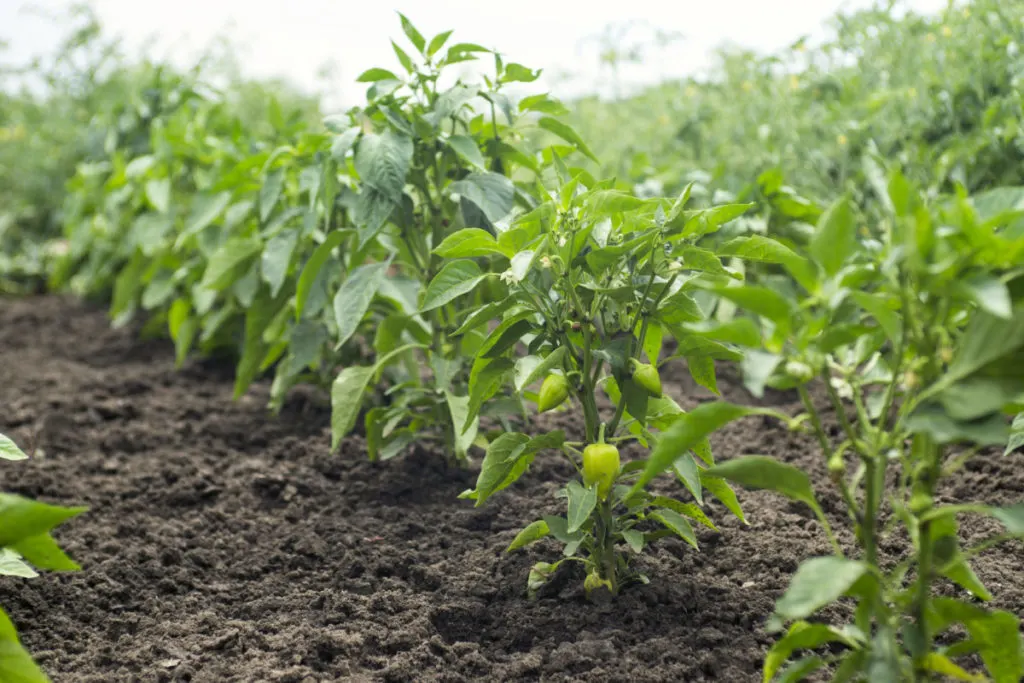
Rather focus on getting the soil conditions right. Remember that a well-draining soil with abundant organic matter is ideal. The organic matter not only provides nutrients, it helps to enhance moisture retention as well.
In combination with light watering, it is often helpful to mulch your peppers.
6. Mulching your peppers
Mulching pepper plants prevents weeds, first and foremost.
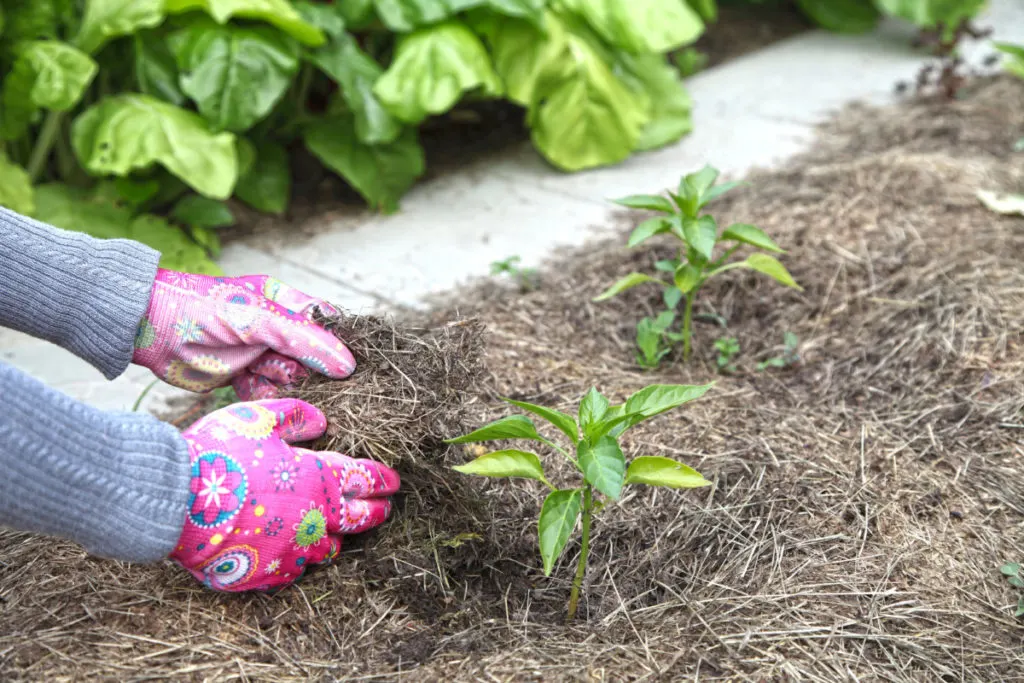
Secondly, and no less important, mulch prevents excessive evaporation from the soil surface.
A sufficiently thick layer of mulch is one of the keystones to (almost) never watering. Just make sure to lay down the mulch after the soil temperatures have warmed up under the sun.
In the end you get to water less and work less, as your peck of perfectly picked peppers grows on its own.
7. Pinching off the first pepper flowers
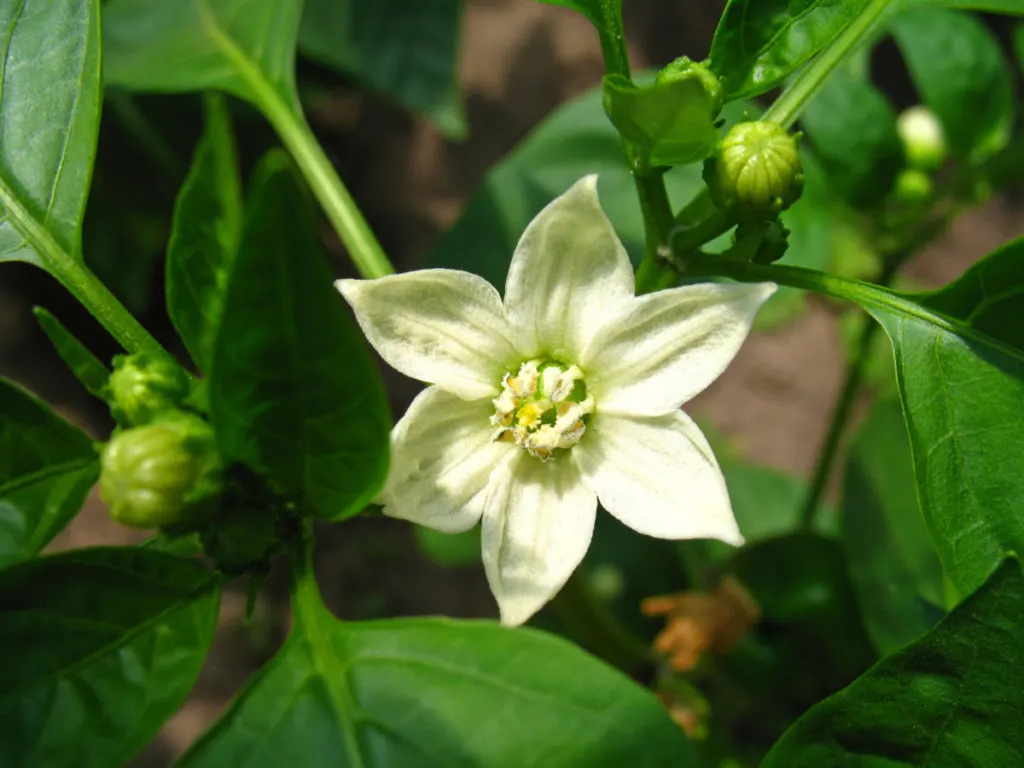
It may seem counter-intuitive at first, but your pepper plants can benefit from an early removal of flowers. In a similar fashion as to how you prune tomatoes to improve overall yields.
As you pinch off the first developing blossoms, you are suggesting to the plant to put more energy into growing, such as deepening their roots, thus making a stronger plant. Doing so, also prevents your peppers from producing fruit too early which may be susceptible to disease.
Here’s our total guide to pruning pepper plants for huge yields.
8. Knowing when to harvest your peppers
The closer you get to harvesting, the more you can taste the delicious homegrown pepper on the tip of your tongue. If you’ve followed some of the aforementioned pepper-growing tips, we hope you’re satisfied with your results.
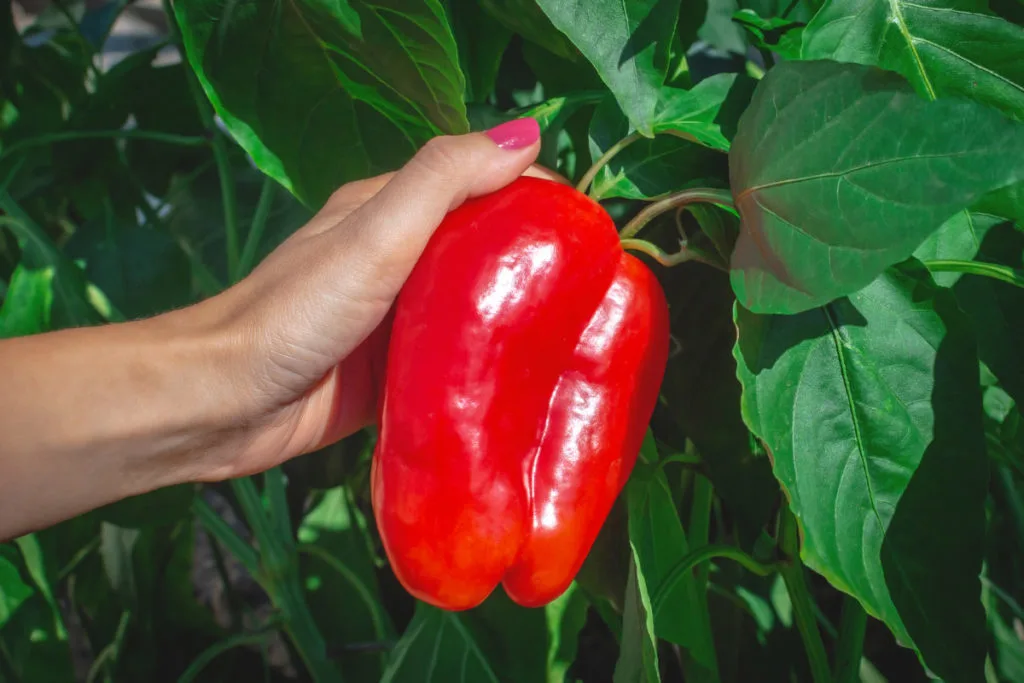
It’s one thing to look at them ripening in the garden as you pat yourself on the back for a job well done. But, do you know when they are actually ready to harvest? Most of us can only assume, as we tend to buy peppers exclusively from the store.
The first-time pepper grower can be reassured by this simple piece of advice: the flavor will always be sweeter and more pure when peppers are allowed to fully ripen on the plant, to whatever color that may be.
Peppers can be red, yellow, orange, purple or green, or shades in between.
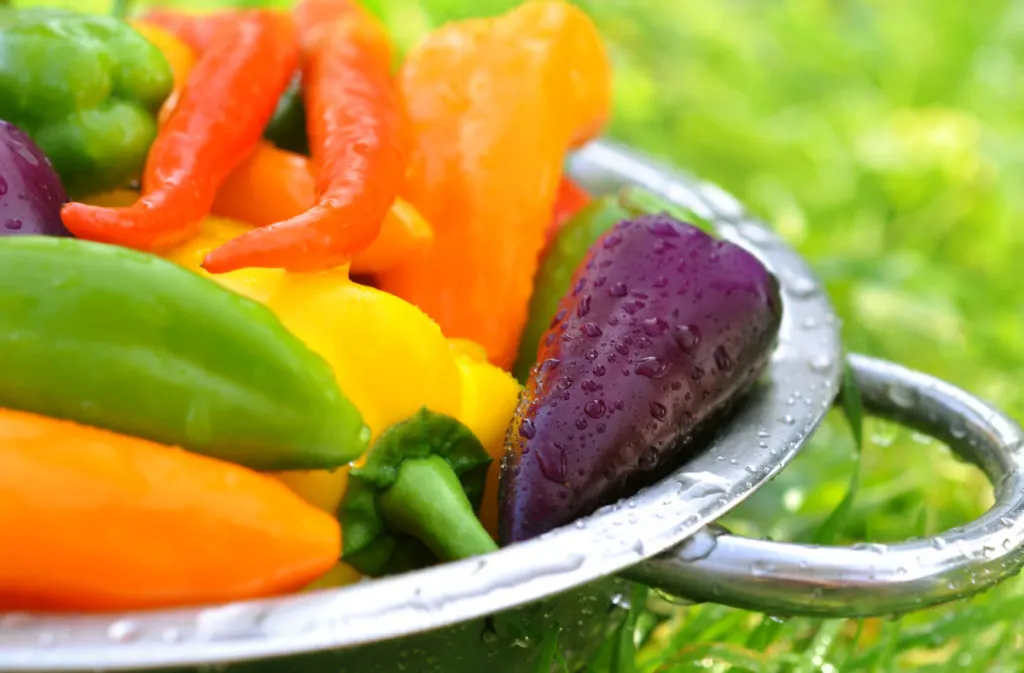
Another train of thought, or another way to harvest, is to harvest peppers before they’re fully ripe, as one may do with cucumbers. Then let them mature off the vine.
The reason being that peppers can be harvested at just about any stage of growth, although their flavor isn’t fully developed until maturity.
It’s your garden and your call.
The longer you leave your peppers to ripen under the sun, the more flavorful they will taste and the more vitamins they will contain. If you harvest them younger and more frequently, you can obtain a larger yield, with a slight loss in flavor. One way around this is to grow more than one variety – so you can harvest the best of both worlds.
One thing is for sure, use your pruners or a sharp knife for harvesting. Never pull peppers off the plant, so as not to damage the stems or uproot the entire plant.
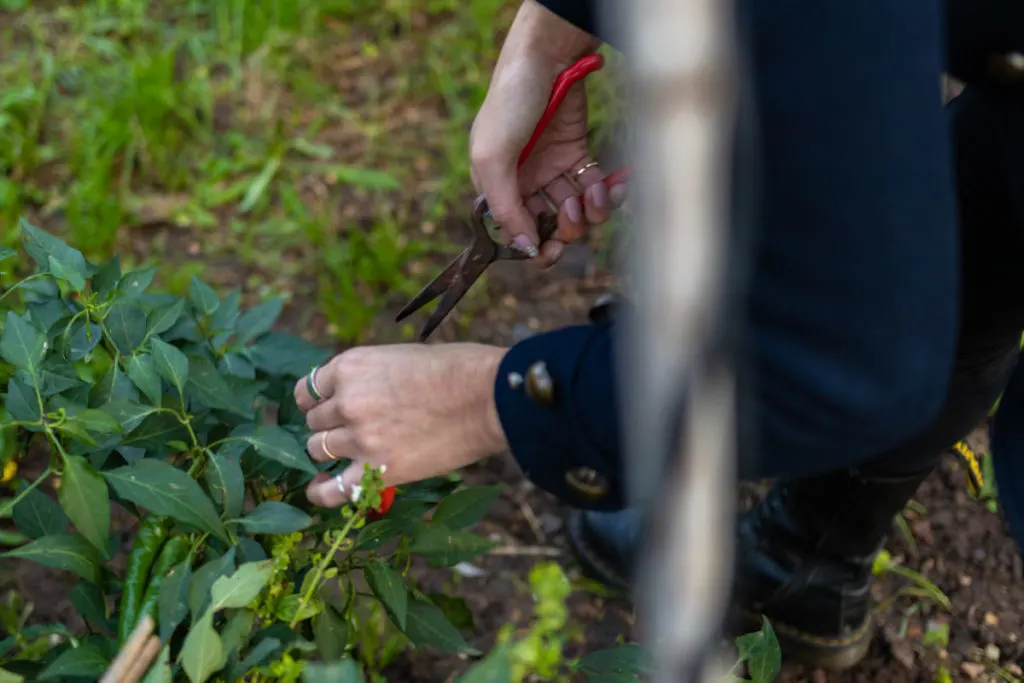
One last takeaway message on growing peppers.
In your quest for an abundant pepper harvest, you may also want to consider companion planting.
Peppers make good neighbors with herbs that attract beneficial insects, such as basil, dill, chives, oregano and parsley. They also benefit from the vast company of other garden veggies: lettuce, eggplant, chard, cucumbers, carrots, beets and tomatoes.
What doesn’t pass the pepper companion test, however, is fennel and most Brassicas.
You can read our complete companion planting guide for peppers here.
During the season, once your peppers really get growing, you may find that the larger and sweeter varieties may need staking. Use this pepper growing technique only where needed.
If you’re growing peppers of the spiciest kind, be sure to protect your hands when cutting into them, perhaps even cutting them on a plate, rather than your regular wooden cutting board and wearing gloves too.
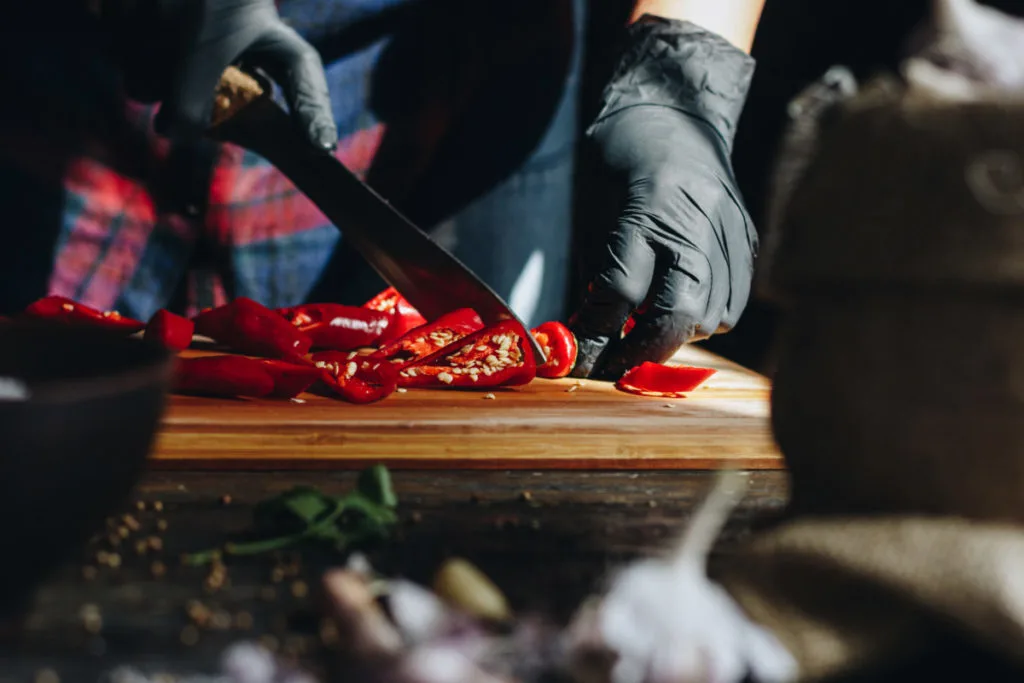
That powerful capsaicin in the fruit can burn for longer than you expect, should you happen to get it anywhere it is not welcome, particularly around your mouth, nose and eyes. There is a reason that it is included in bear spray.
After that, it is up to you to freeze, pickle and dehydrate your peppers for continuous use throughout the year.

Get the famous Rural Sprout newsletter delivered to your inbox.
Including Sunday musings from our editor, Tracey, as well as “What’s Up Wednesday” our roundup of what’s in season and new article updates and alerts.

